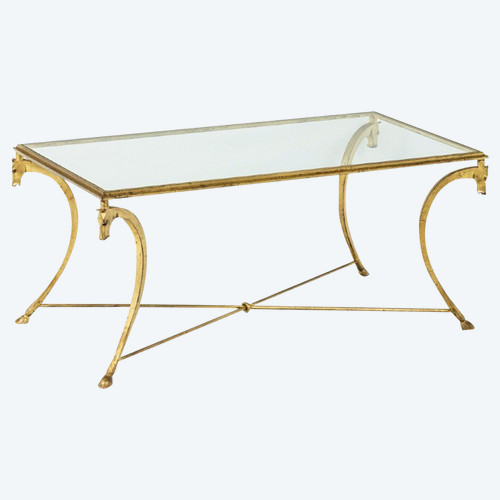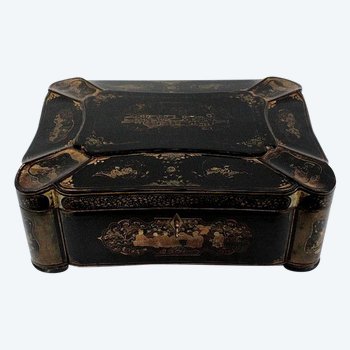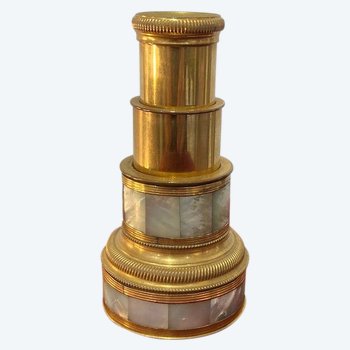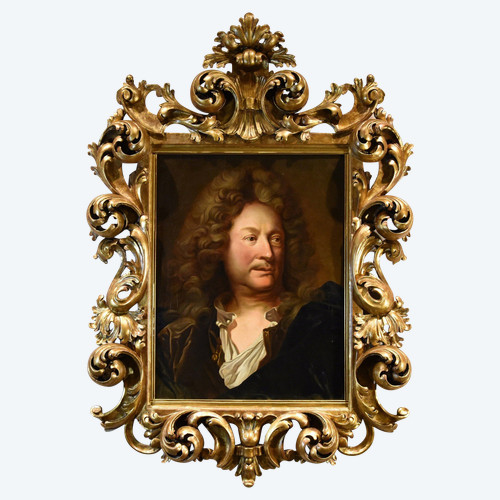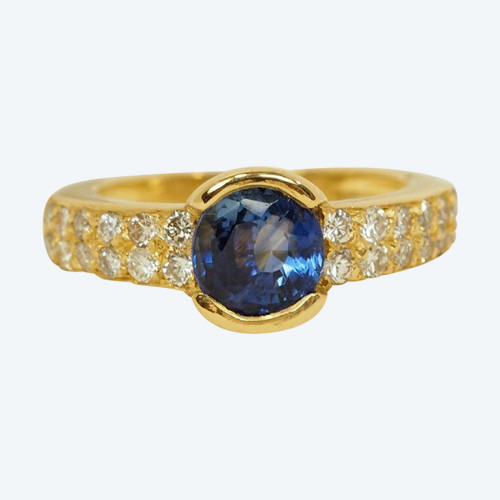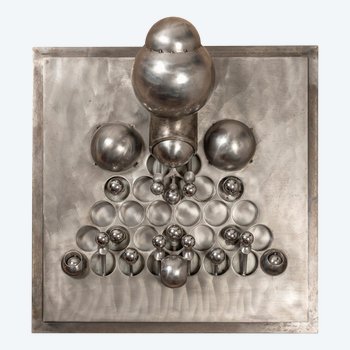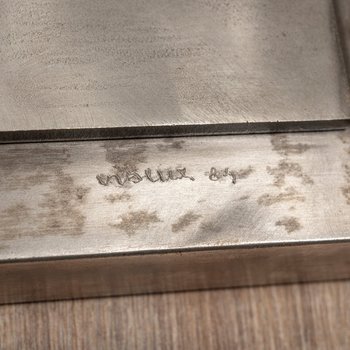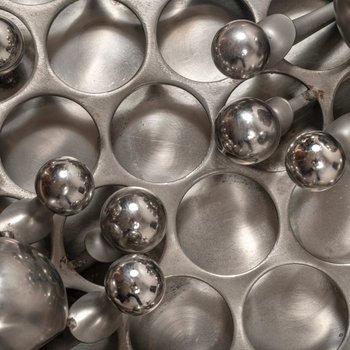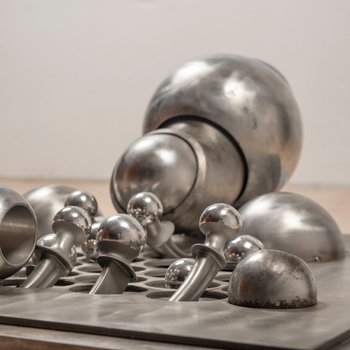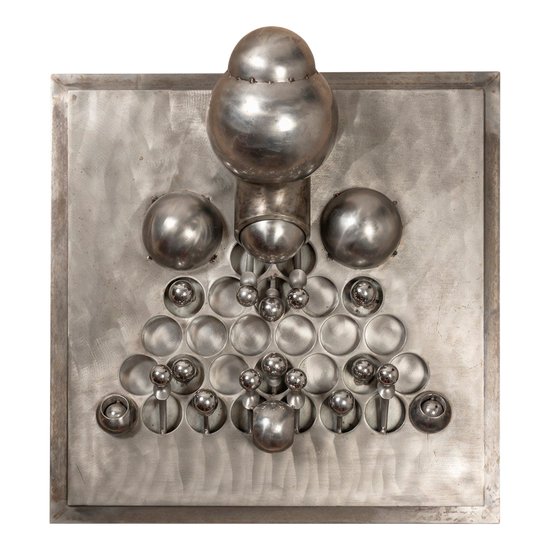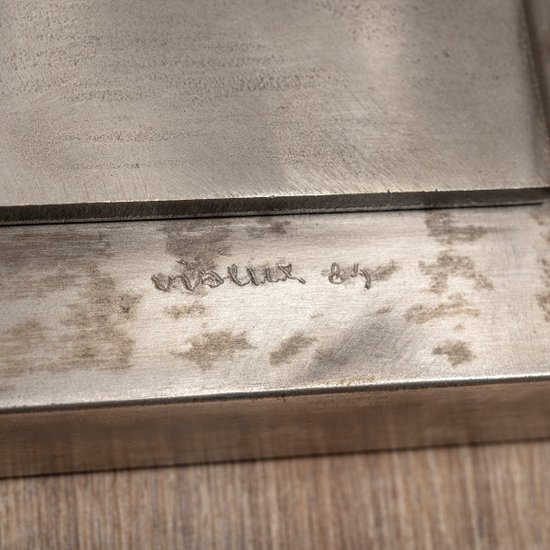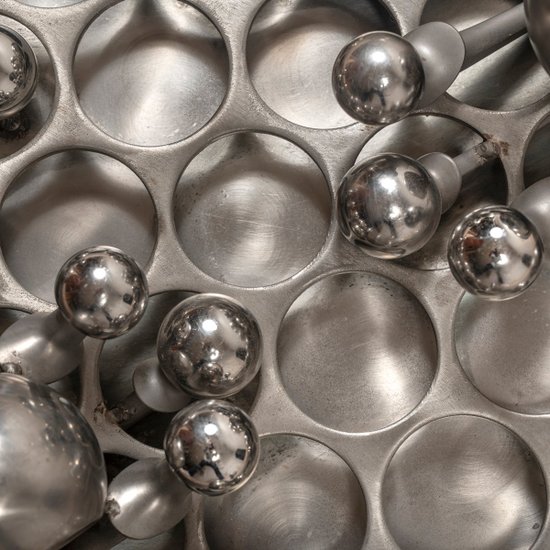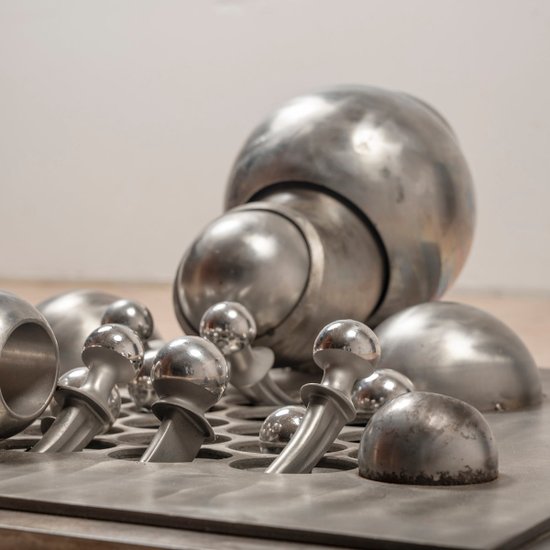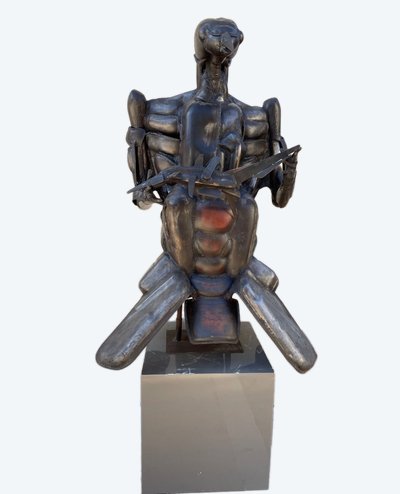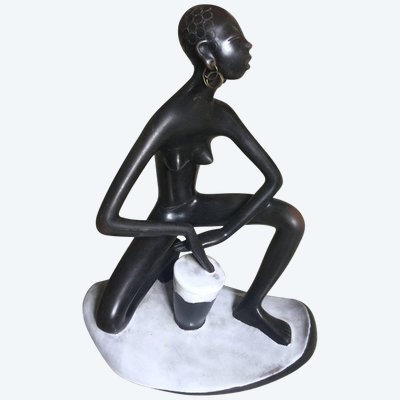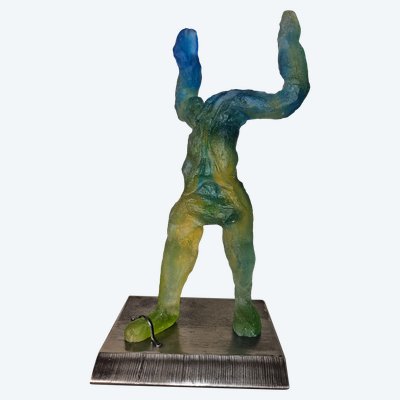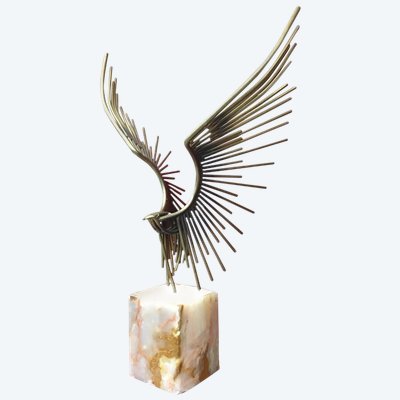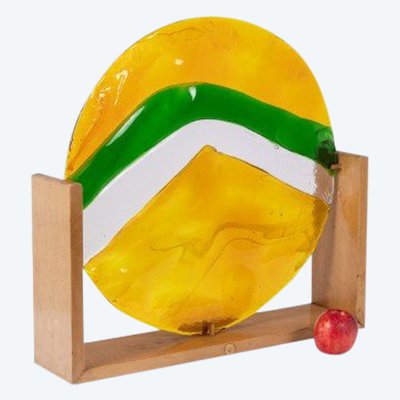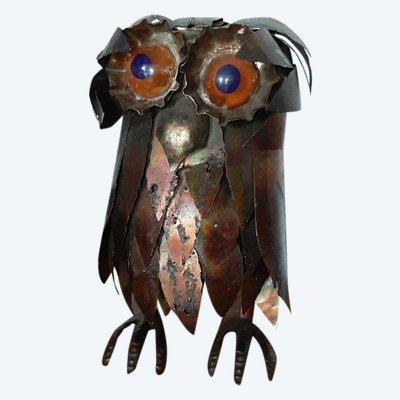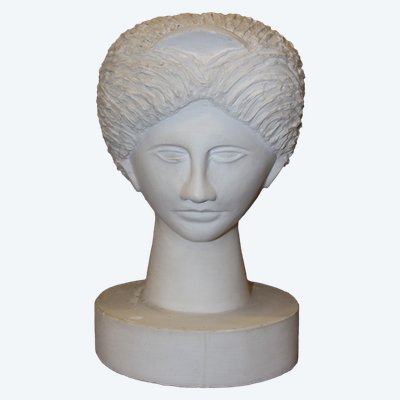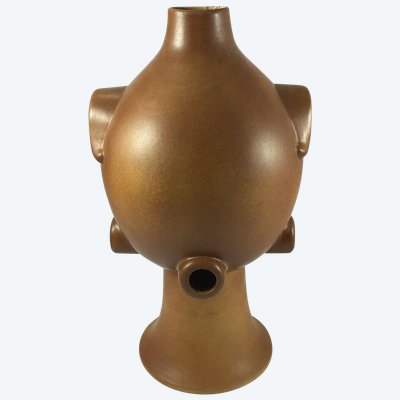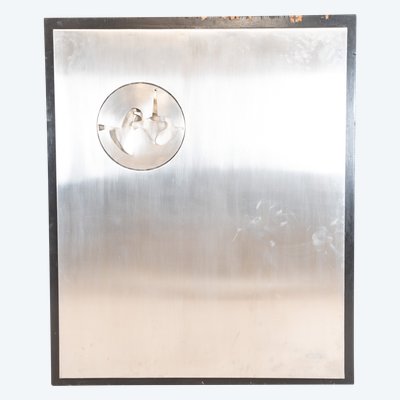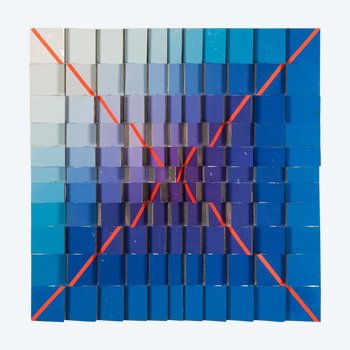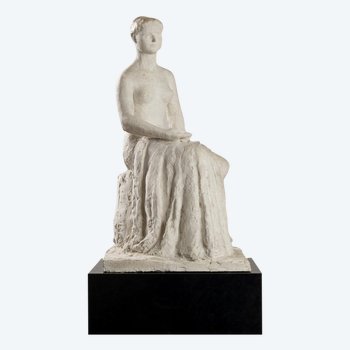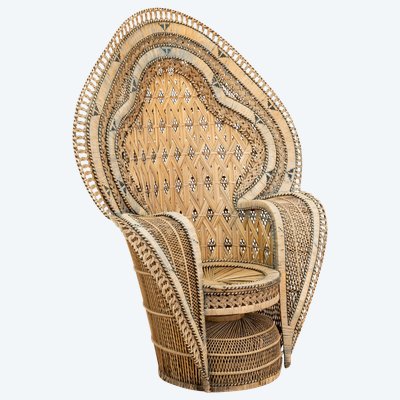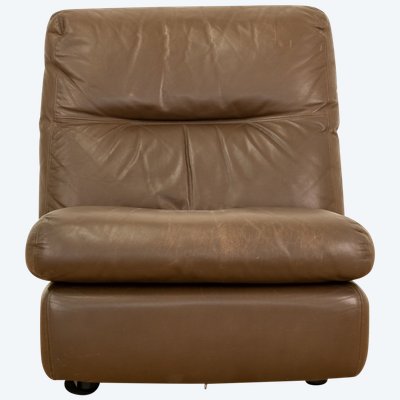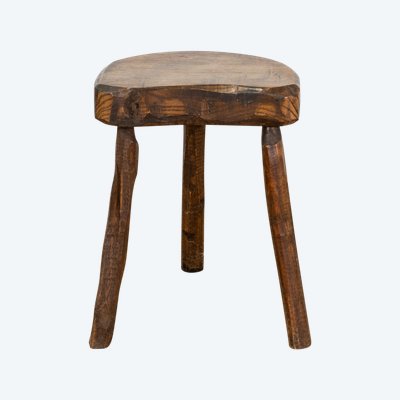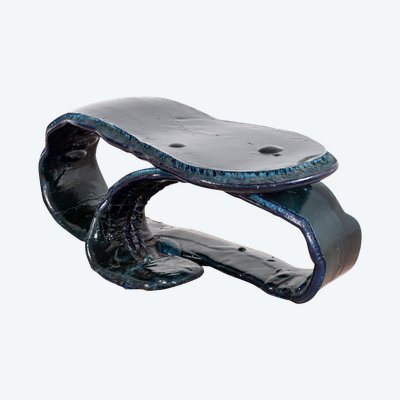This description has been translated and may not be completely accurate. Click here to see the original
Claude Viseux is a French painter, sculptor and engraver aquafortist and lithographer born July 3, 1927 in Champagne-sur-Oise and died November 9, 2008 in Anglet.
It is in the years 1959-1960 that the sculpture of Claude Viseux, described as "protean, dreamlike, fantastic" - friend of Max Ernst, Man Ray, Francis Ponge and Henri Michaux, he does not disavow a kinship with Surrealism9 - replaces painting, his first achievements being the objects found on the seashore that he petrifies in wax10 on the one hand, the prints of stones and seaweed cast in bronze on the other hand.
In 1960, he signed the Manifesto of 121 entitled "Declaration on the right to insubordination in the Algerian war".
In 1961, his experiments are directed towards the organic bodies, in particular with his series Osteales made up of assemblies of fossilized bones that he patinates or on the contrary stripped, that he screws, saws, assembles and plasticizes. The Concrétudes or Direct Castings that follow in 1961-1962 are obtained from molten metal castings in sand, generating reliefs that he welds onto steel plates. However, he quickly adopted stainless steel - which he and Pol Bury were among the first to use in sculpture - as his preferred material. "He assembles various industrial scraps - pipes, nuts, bolts, vats... - to create sculptures halfway between the mechanical and the biological", Sophie Serra11 recounts. Claude Viseux, who then frequented Jean Tinguely, Piotr Kowalski, Michel Guino, Takis and César, confirms: "My recovery of the industrial element widens towards the special steels, with an attempt at a formal vocabulary: bars, profiles, spheres, ball joints, bottoms of tanks, combustion chambers of Boeing, tubing, valves of ship "9.
"The artist enters in the heart of the industrial reality, prospects in the assembly lines of Renault and prowls in the wastelands around the factories", thus restores the encyclopaedia Les Muses: "he recovers scrap iron, spare parts, debris of cars, old chassis, a whole series of elements become useless. They assemble them, as they are, without modifying them. Aggressive or pathetic creatures are going to emerge from this physical and dialectic fight that the artist delivers with the matter and to enter the field of a strange, supernatural poetic5 ". In the years 1967-1970, the "active structures" in stainless steel thus proceed of the industrial production of series. They are divided into families of combinatorial forms composed by addition, subtraction, multiplication, division. He confirms: "the industrial world is my nature, my broth of culture, where I look for bodies, families of bodies, kinds, species, in a round trip of the artificial to the natural to confuse the reigns, to invent others according to an organic geometry which fertilizes the various types of structures, which arranges the form concerned by the form to come "9. In 1968, Claude Viseux moved to the Villa Baudran in Arcueil, a studio that he kept until 1992.
If imaginary bodies are born from the mechanical parts that Claude Viseux borrows from the automobile, the plane and the boat, in 1972, "the symmetry of these pure stainless steel forms", notes Lydia Harambourg, "leads him to question the notion of unstable equilibrium "12. His Instables were exhibited at the Venice Biennale in 1972 where, as Lydia Harambourg reminds us, an entire room was devoted to "drawings that take up his mechanical vocabulary of spheres, spinning tops, propellers, rings, astrolabes and balances. The Instables are also, in 1973, presented at the gallery Le Point Cardinal in Paris where Claude Viseux had already exhibited in 1968 with Henri Michaux and Joaquin Ferrer. He also participates in the design and production of sets and costumes for ballets. His stainless steel sculptures can be found in many public places.
A beach in Anglet.
From 1975 to 1992 Claude Viseux was a professor and head of the sculpture workshop at the École nationale supérieure des beaux-arts de Paris. In 1981 he made his first trip to India, a country to which he returned nine times until 1990 and to which he attributed an important influence on his work11 : the colored compositions he created at that time expressed an impregnation of Indian culture, its rituals, its societal codes, its cinema, its music and its shimmering clothing colors13. In 1991, he made about thirty monotypes in the workshop of the engraver Tanguy Garric.
With his wife Micheline Viseux, historian of textiles and printed fabrics14, Claude Viseux retired in 1992 to Hossegor, then in 1999 to Anglet where he continued his work on monumental projects until he was taken away by a long illness on November 9, 200815. According to the will of the artist, lover of the ocean, his ashes o
Ref: 6Z7O8UCIN4

